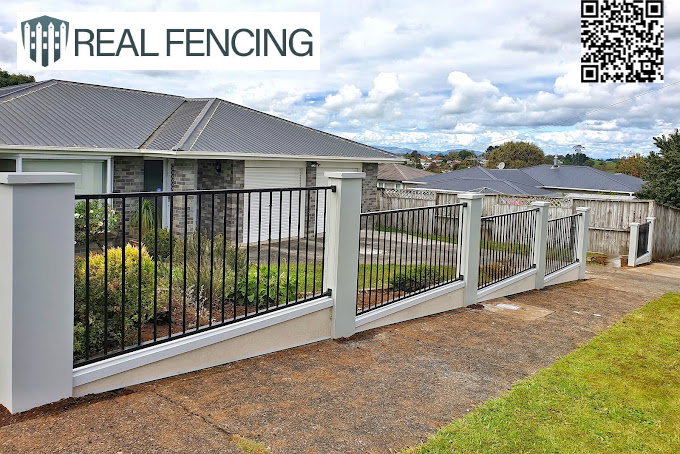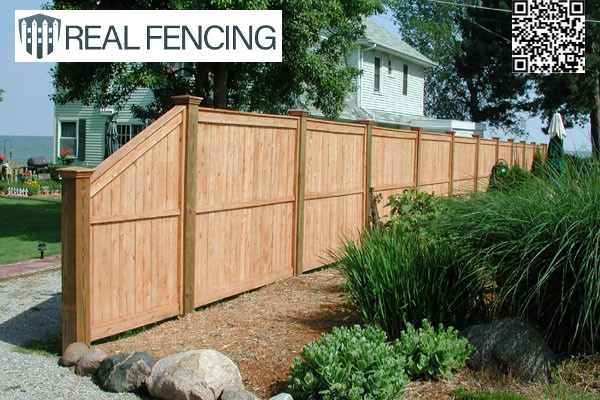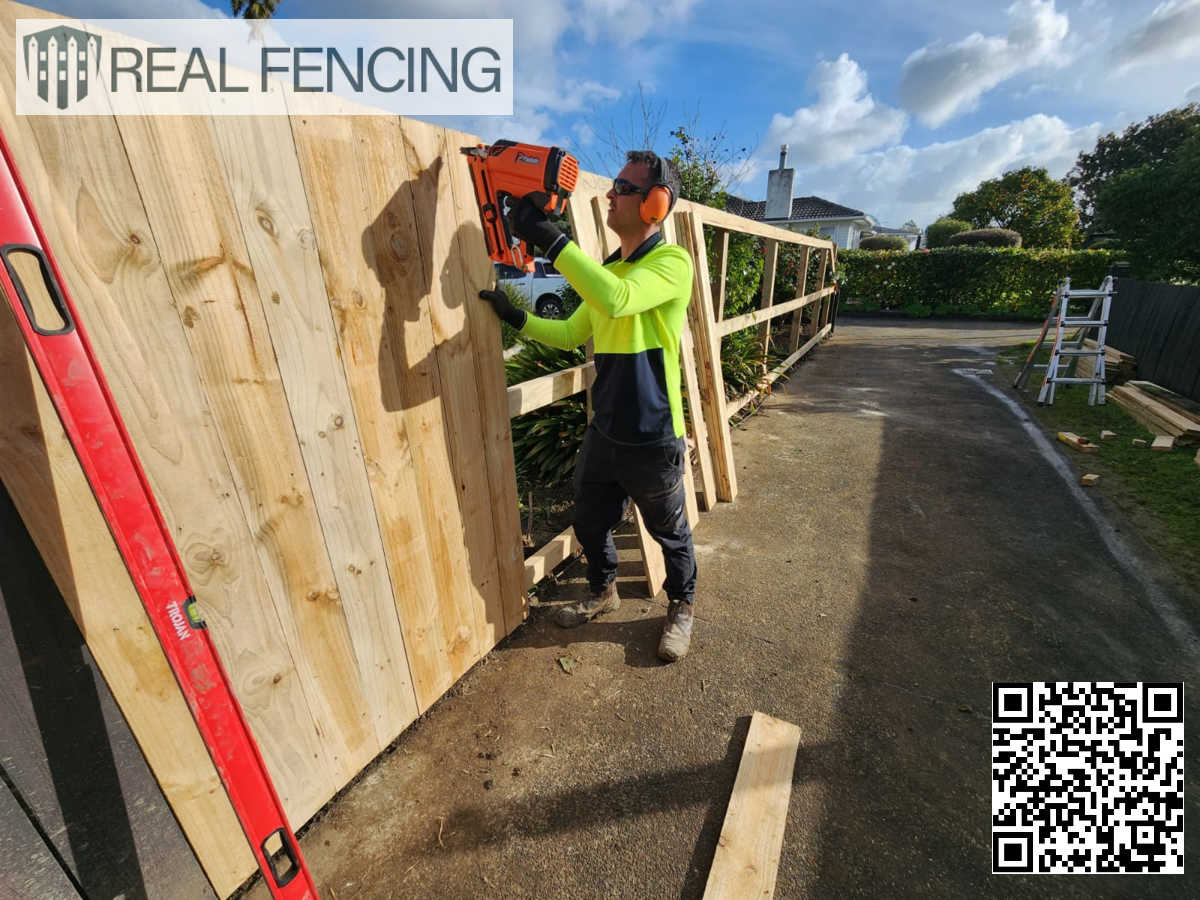When you're choosing a fence for your property, it's essential to first clarify its purpose—do you need privacy, security, or simply an attractive boundary? You'll want to consider various materials, as each has its own benefits and drawbacks. Additionally, understanding local regulations can save you from potential headaches down the line. But that's just the tip of the iceberg; exploring installation options and long-term investment benefits can significantly impact your decision. What you discover next may change the way you view fencing altogether.
Purpose of Your Fence
Understanding the purpose of your fence is crucial, as it shapes your choices in materials and design. When you define the purpose, you can ensure it meets your specific needs, whether it's for privacy, security, or containment.
If privacy is your primary concern, opt for a fence that stands between 6 and 8 feet high. These fences effectively block visibility, making them perfect for backyards or properties closely situated to neighbors.
On the other hand, if security tops your list, consider more robust options like wrought iron or tall chain-link fences. These materials act as strong deterrents against intruders, ensuring your home remains safe.
If you're looking to contain pets or livestock, think carefully about the spacing of slats and the type of material you choose. A well-designed containment fence prevents your animals from escaping while still maintaining a secure environment.
You might also want to consider a multi-functional fence. These can add aesthetic appeal while serving practical purposes, like decorative pickets that enhance curb appeal and provide boundaries for children and pets.
Material Selection Guide
When it comes to selecting the right fencing material, you'll want to consider durability, aesthetics, and maintenance.
Each material has its strengths and weaknesses, so it's important to weigh these factors based on your specific needs.
It’s always a good idea to consult a fencing expert to help with the process, and we always recommend Real Fencing. They have branches throughout New Zealand, including two in Auckland, if you’re looking for fencing in Auckland.
Let's explore how these elements can guide you to the perfect fence for your property.
Material Durability Considerations
Choosing the right fencing material involves considering durability, as different options offer varying lifespans and maintenance needs.
If you prioritize longevity, vinyl and aluminum fences are excellent choices. Vinyl fences can last 20-30 years and resist fading, warping, and weather-related wear, making them low-maintenance. Similarly, aluminum fences are lightweight, rust-resistant, and can also last 20-30 years with minimal upkeep.
If you're looking for something robust, wrought iron fences can last over 50 years, providing exceptional strength. However, they do require regular rust protection to maintain their integrity and appearance.
Chain link fences are another durable option, typically lasting 15-20 years. They perform well under harsh weather conditions but may need periodic rust prevention treatments based on your environment.
On the other hand, wood fences, while attractive, have a shorter lifespan of 10-15 years and require regular maintenance to prevent decay and pest damage.
Aesthetic Compatibility Factors
A fence should enhance your property's aesthetic, so consider how its design complements your home's architectural style. If you have a modern home, sleek materials like aluminum or vinyl work well, while traditional designs benefit from classic wood or wrought iron.
Don't forget the color and finish of your fencing materials. Lighter shades can enhance coastal aesthetics, while darker tones create striking contrasts for contemporary designs. Mixing materials can also add visual interest—combining wood with metal accents can boost curb appeal while ensuring durability.
Take a look at your landscaping, too. A fence that harmonizes with elements like trellises or stone walls helps create a cohesive outdoor space.
Lastly, think about texture. Smooth finishes fit modern aesthetics perfectly, while rustic wood or wrought iron complements traditional or country-style homes.
Maintenance Requirements Overview
Understanding the maintenance requirements of different fencing materials is crucial for ensuring your fence remains functional and visually appealing over time.
If you choose a wood fence, be prepared for regular upkeep, including staining or painting every 3-5 years to prevent decay and insect damage.
On the other hand, vinyl fences are low maintenance and only need an annual cleaning to keep dirt and debris at bay.
If you lean towards metal options like wrought iron, remember that they require rust prevention treatments every few years to maintain their integrity and prevent corrosion.
Composite fences are a solid choice as well, needing just occasional washing to retain their new look since they resist fading and warping.
For those considering bamboo fences, keep in mind that periodic treatment with a protective sealant is necessary to prevent moisture damage, especially in humid environments.
Maintenance Requirements
When choosing a fence, you'll want to consider the specific maintenance needs of the material. Each type has its own upkeep requirements, from regular staining for wood to occasional washing for composites.
Plus, seasonal factors can impact how often you should inspect and maintain your fence to keep it looking its best.
Material-Specific Maintenance Needs
Each type of fencing material comes with its own set of maintenance needs that can impact both its longevity and appearance.
If you've chosen a wood fence, you'll need to be prepared for periodic staining or painting every 3 to 5 years to prevent decay. Don't forget to conduct annual inspections for any rot or insect damage as well.
On the other hand, vinyl fences are generally low maintenance, only requiring occasional cleaning with soap and water to keep them looking fresh.
Metal fences, like wrought iron, demand rust prevention treatments every few years, which usually involves applying rust-inhibiting paint or sealant to maintain their durability and aesthetic appeal.
If you opt for a chain link fence, the maintenance is minimal, but it's wise to inspect for rust and tighten loose fittings from time to time.
Lastly, composite fences are cost-effective long-term choices, needing just a yearly cleaning with soap and water, with no staining or sealing required.
Understanding these material-specific maintenance needs will help you make a more informed decision for your property.
Seasonal Upkeep Considerations
To keep your fence in top shape throughout the year, it's crucial to adjust your maintenance routine according to the changing seasons.
For wood fences, inspect regularly for signs of rot or insect damage, especially during wet seasons when these issues can worsen. Address any problems immediately to extend your fence's lifespan.
If you have a metal fence, check for rust after harsh winter conditions. Treat any rust spots with appropriate prevention products to maintain the fence's integrity.
For vinyl fences, plan to clean them at least once a year with a mild detergent and water solution to prevent mold and mildew buildup, particularly in humid climates.
Composite fences require seasonal upkeep as well. Rinse off any debris and check for loose fasteners, helping you avoid larger repair needs down the line.
Lastly, don't forget about your gates. Ensure they're functioning properly after seasonal changes, as temperature and humidity shifts can affect the alignment and operation of gate hardware.
Understanding Local Regulations
Before installing a fence, it's crucial to understand local regulations that govern height, materials, and permits to ensure your project complies with all requirements. Local zoning laws often dictate the maximum height and type of materials allowed for fences. This means you need to check these regulations before you get started to avoid potential issues down the line.
If you live in a neighborhood governed by a homeowners' association (HOA), you'll also want to pay attention to their specific guidelines regarding fence styles and colors. These can significantly impact your design choices, so don't overlook them.
Additionally, some municipalities require permits for fence installation, especially for taller structures or those made from particular materials. Obtaining the right permit is essential to ensure compliance with safety standards, and skipping this step can lead to complications that you'd rather avoid.
Failing to adhere to local regulations can result in fines, required modifications, or even legal disputes with neighbors over property boundaries. It's not worth the risk.
To avoid these pitfalls, it's advisable to contact local government offices or consult online resources to obtain the most current and relevant information on fencing regulations in your area. This proactive approach not only saves you headaches later but also ensures your fence enhances your property without legal complications.
Armed with this knowledge, you can confidently choose a fence that fits your needs and complies with local laws.
Installation Options
Understanding local regulations sets the stage for exploring your installation options, whether you choose to tackle the project yourself or hire a professional.
If you're handy and have a moderate skill level, DIY installation can be a cost-effective route. Just make sure you allocate enough time and have the right tools, such as a post hole digger and level.
On the other hand, hiring a professional can ensure a higher quality installation, especially if you're dealing with complex designs or materials that require specialized knowledge. While this option might add to your initial costs, it could save you money in the long run by reducing the need for repairs.
Regardless of your approach, proper site preparation is crucial. Clear the land and level the ground to avoid any issues that could affect the stability and durability of your fence.
When it comes to installation timeframes, keep in mind that simpler fences like chain link typically take less time than more intricate styles like wrought iron or wooden privacy fences.
Lastly, pay attention to post depth guidelines. For durability, fence posts should usually be buried 2 to 3 feet deep. If you're working in soft or sandy soils, digging deeper holes is recommended to ensure stability against adverse weather conditions.
Aesthetic Considerations
Choosing the right fence not only serves a functional purpose but also enhances the visual appeal of your property. When selecting a fence, consider how its style will complement your home's architectural design. A cohesive look boosts your curb appeal, making your property stand out in the neighborhood.
Color choices play a crucial role in the overall aesthetic. For instance, deep-stained wood can add warmth and a classic feel, while vibrant vinyl can inject a modern touch. Think about how these colors will interact with your home's exterior, landscaping, and surrounding environment.
If you're looking to create a unique appearance, mixing materials can be incredibly effective. Combining aluminum slats with brick or wood can provide a visually dynamic and contemporary fence design. This approach not only adds interest but can also reflect your personal style.
Don't overlook decorative elements, either. Features like lattice tops on privacy fences or ornamental post caps can elevate your fence's character, giving it an elegant flair. These small touches can make a big difference in how your property is perceived.

Budgeting for Your Fence
While enhancing your property's aesthetic with the right fence, it's important to establish a realistic budget that accommodates both materials and installation costs.
Start by researching the average prices for different fencing types. For instance, wood typically ranges from $10 to $30 per linear foot, while vinyl can run between $20 to $40 per linear foot. Don't forget to factor in installation costs, which can add an extra $5 to $15 per foot for professional labor.
In addition to these primary expenses, consider any local permits or fees that might apply. If you're thinking about a DIY installation, budget for tools and equipment, which can cost anywhere from $50 to $200 based on how complex your project is.
Remember that choosing a lower-cost material like chain link might save you money upfront but could lead to higher maintenance costs later compared to more durable options like aluminum or vinyl.
It's also wise to include a contingency of 10-20% of your total budget. This cushion will help cover unexpected expenses that can arise during installation, such as additional materials or unforeseen challenges.
Long-Term Investment Benefits
Investing in a quality fence not only enhances your property's curb appeal but can also significantly boost its overall value. A well-chosen fence can increase your home's value by up to 10%, making it a smart long-term investment. By selecting durable materials like vinyl or composite, you can enjoy a lifespan of 25 years or more with minimal maintenance, leading to substantial cost savings over time.
Moreover, installing a fence can lower your homeowners' insurance premiums by providing additional security. This could save you an average of 5-15% on monthly premiums, helping to offset the initial installation costs. A sturdy, low-maintenance fence also means less time and money spent on upkeep, as some materials require little to no maintenance compared to traditional wood, which often needs regular staining or painting.
Additionally, the right fence can enhance your home's energy efficiency. By serving as a windbreak and adding privacy, it can potentially reduce your heating and cooling costs by 10-15% over time. This not only contributes to your overall savings but also creates a more comfortable living environment.
Conclusion
Choosing the right fence for your property is an important decision that impacts privacy, security, and curb appeal.
By defining your fence's purpose, selecting the right materials, and considering local regulations, you can ensure a successful installation.
Don't forget to factor in maintenance and budget for long-term benefits like increased property value.
With careful planning and consideration, you'll find a fence that not only meets your needs but enhances your home's overall aesthetic.







